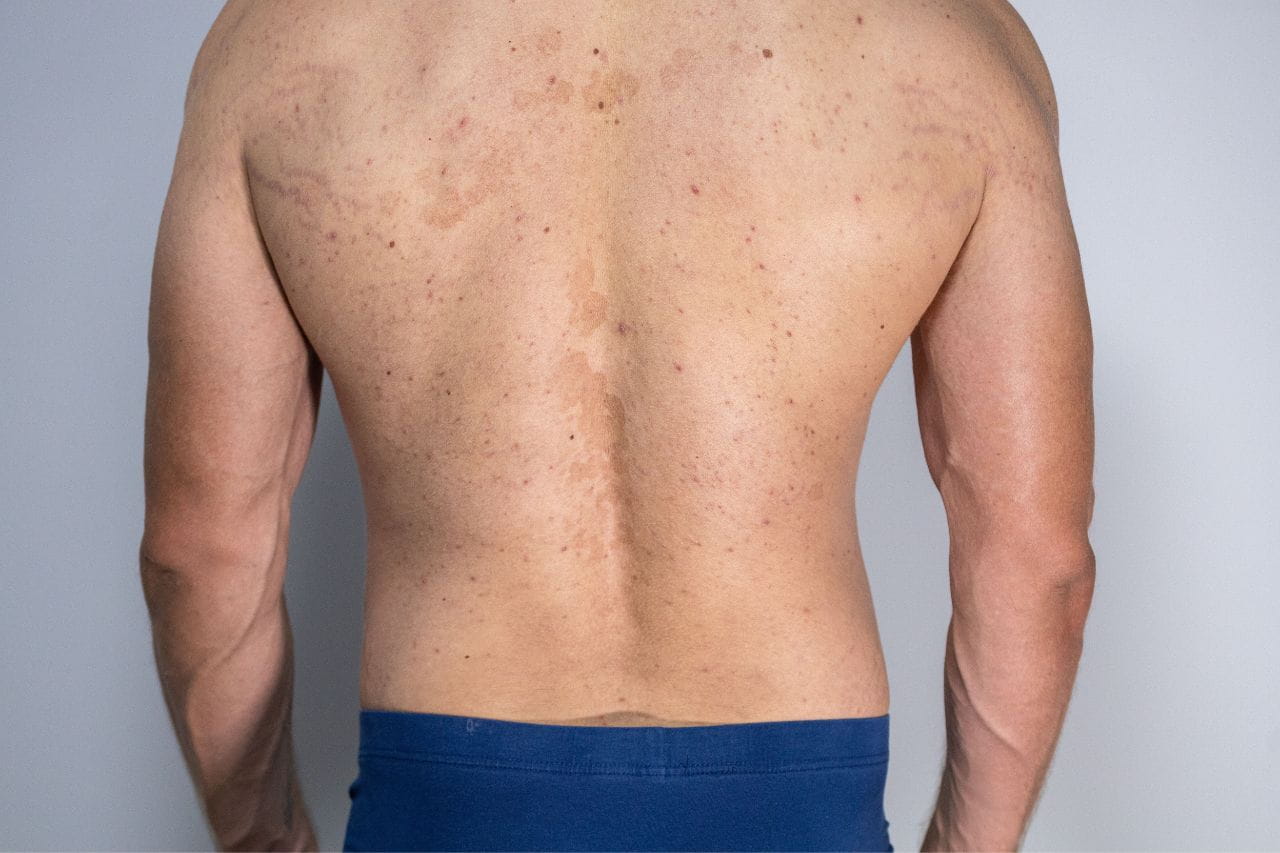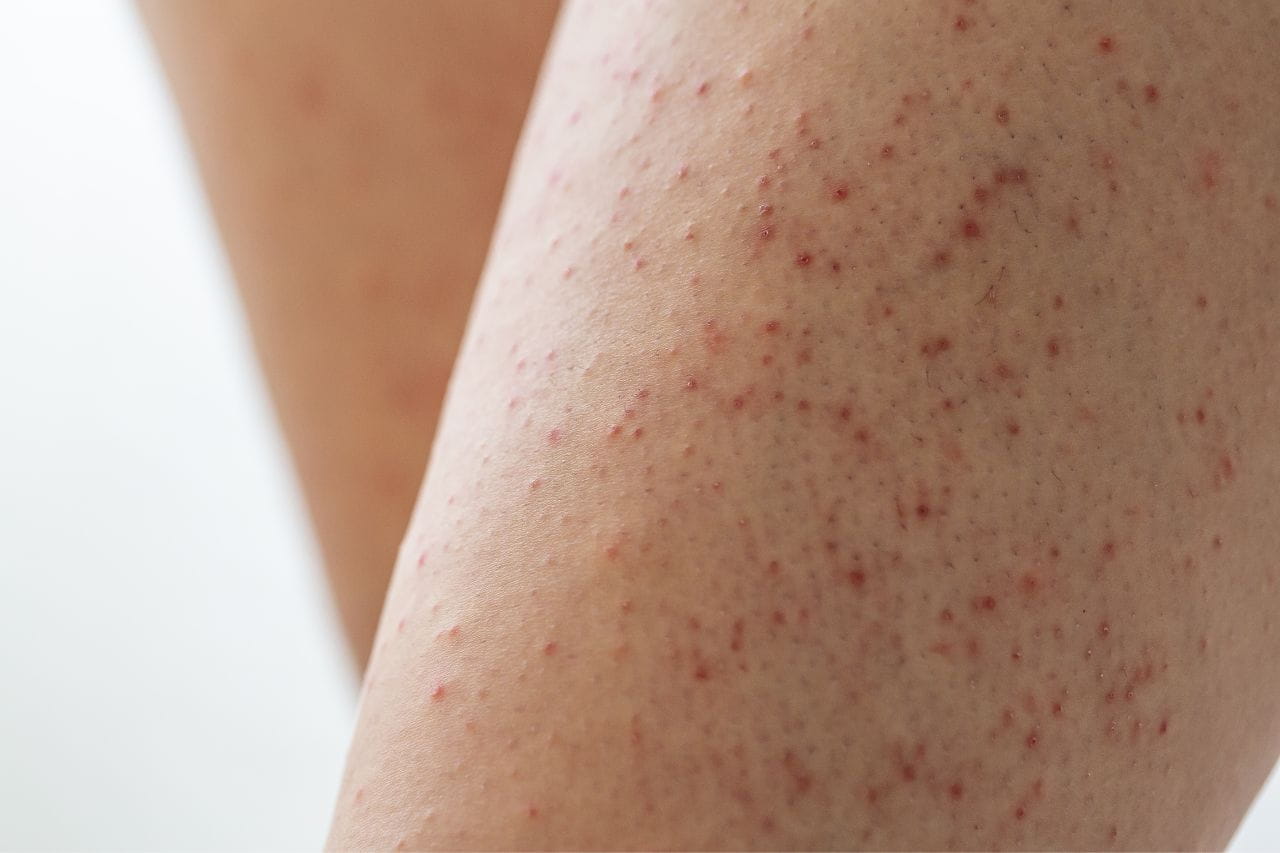Folliculitis

Folliculitis Symptoms
Folliculitis affects the skin, causing symptoms that include:
- Redness
- Itching
- Irritation
- Tiny bumps that are red or sometimes white if they contain pus
The symptoms vary based on which of several kinds of folliculitis you have. For example, there are types of folliculitis caused by bacteria or yeast associated with shaving or using a hot tub, more common in people with suppressed immune systems, etc.
In some cases, it can be challenging to determine if what you have is folliculitis vs. acne.
Folliculitis Risk Factors
The exact cause of a case of folliculitis often isn’t known. However, several risk factors increase your likelihood of developing the telltale folliculitis itch and redness, including:
- Shaving frequently
- Being overweight or obese
- Having diabetes
- Taking antibiotics for an extended period
- Using a hot tub that isn’t cleaned properly
- Getting sweaty and not washing after
How Is Folliculitis Diagnosed?
Doctors perform a physical exam to diagnose folliculitis. Typically, your primary care physician can make the diagnosis, or you can go to a dermatologist.
At your appointment, your doctor will review your medical history and ask questions like:
- Do you shave the affected area every day?
- Have you been doing activities that are causing you to sweat more than usual?
- Are you taking any medications, including those prescribed for acne?
- Have you recently used a hot tub or sauna?
In some cases, your doctor may refer you to a dermatologist for skin testing to rule out other possible conditions. This can include a biopsy, where the doctor collects a bit of skin from the affected area for analysis.
Folliculitis Treatment
Folliculitis treatment varies based on the type and severity of the infection.In some instances, folliculitis resolves on its own within a few days. In others, washing with antibacterial cleansers can reduce the number of bacteria on the skin and eliminate the symptoms. Your doctor may also recommend using anti-itch creams or applying warm towels to soothe irritated skin.
Some types of folliculitis will return after treatment if you don’t change how you care for your skin.
For more severe cases of folliculitis, doctors can prescribe oral antibiotics. And if the condition causes boils or carbuncles (clusters of boils), your doctor may have to drain them to release the accumulation of pus and help them heal. Proper treatment of boils and carbuncles can reduce the risk of scarring.
When to Contact Your Doctor About Folliculitis
You should talk with your doctor if your folliculitis has any of these characteristics:
- It occurs with a fever or chills.
- It spreads to other parts of your body.
- It has bumps that leak fluid.
- It has bumps that are painful or firm.
Talk with Your Baptist Health Physician About Folliculitis
Folliculitis is a very common skin condition that often resolves without treatment or with simple changes to your skincare routine. But if you aren’t sure what’s causing your skin irritation or have a more severe case of folliculitis, your primary care doctor can help by prescribing treatment. They may also refer you to a dermatologist.It’s always better to talk with your doctor and be reassured that you have a minor infection than to assume you do and allow a different condition to worsen.



